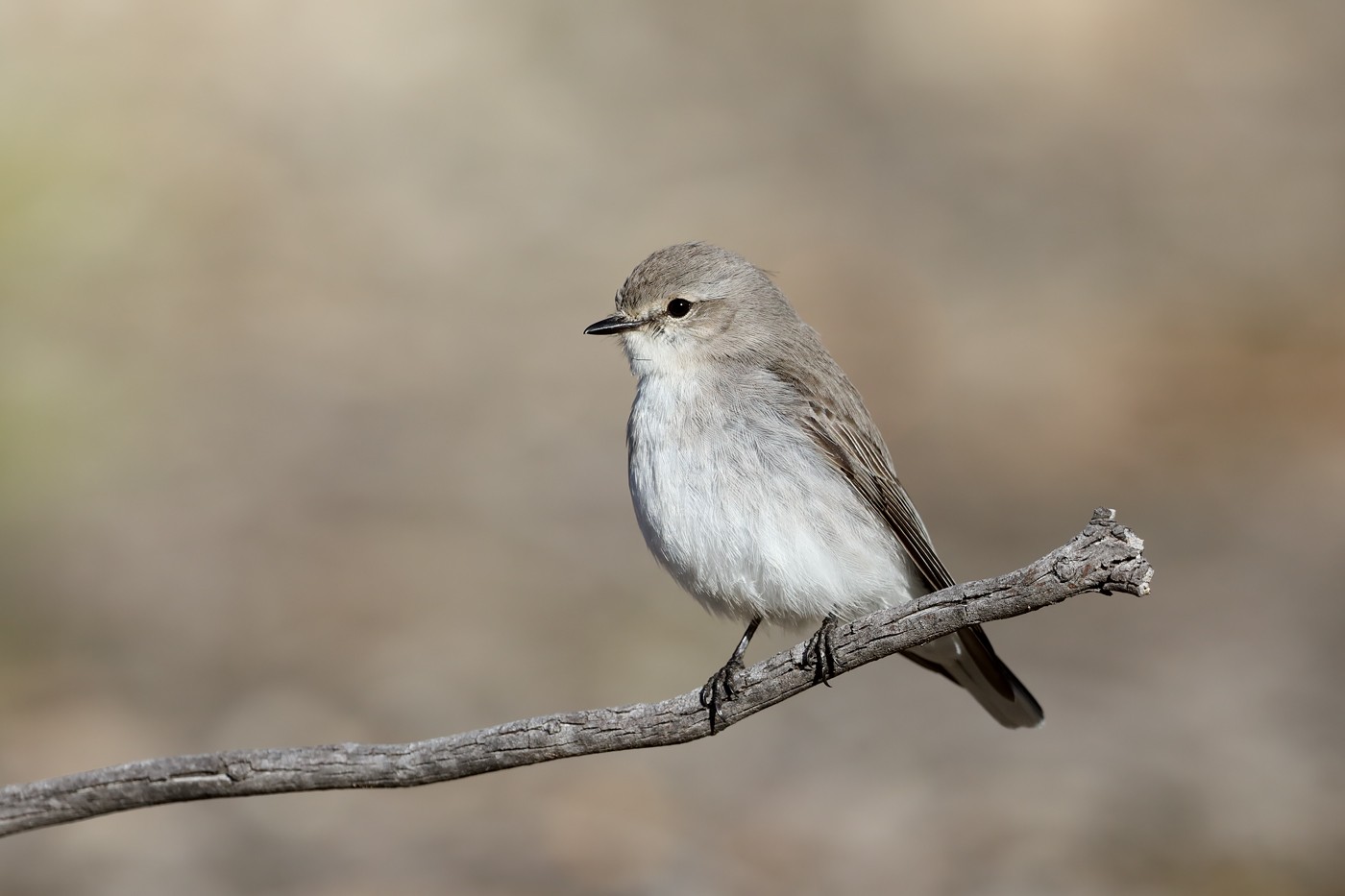Jacky-winter
A species of Typical Flyrobins Scientific name : Microeca fascinans Genus : Typical Flyrobins
Jacky-winter, A species of Typical Flyrobins
Botanical name: Microeca fascinans
Genus: Typical Flyrobins
Content
Description General Info
Description
The jacky winter is around 12 – 14 cm in length (including the tail) and its weight varies from 14 – 18 g. The plumage of M. f. fascinans includes a greyish breast with white on the bottom half, its head and back is greyish-brown, while its wings are a darker brown with white edges. The bill is black, it has a narrow eye-line and a buff alula stripe. The tail of M. f. fascinans is blackish brown with white outer feathers. Its legs are black. Subspecies M. f. assimilis is very similar to M. f. fascinans; however, it is darker, with more grey over the breast and flanks, covering up the white which is seen on M. f. fascinans. M. f. pallida is smaller than the other two subspecies, being only around 13 cm. M. f. pallida is much more pallid than the other subspecies, and is usually a sandy brown colour. 
Size
14 cm
Nest Placement
Tree
Feeding Habits
Jacky-winter primarily consumes insects, utilizing sit-and-search predation techniques including hawking and ground-pouncing. Jacky-winter is energetically engaged in foraging, covering significant distances to secure prey.
Habitat
The jacky-winter is primarily found in dry, lightly timbered habitats such as eucalypt woodlands, mallee, and scrublands with open shrub layers. It shows a preference for areas with clear spaces and often inhabits ecotones between forested and cleared lands. Additionally, the jacky-winter can be found in man-made environments like urban parks and gardens, as well as in eucalypt savanna within lowland regions.
Dite type
Insectivorous
General Info
Feeding Habits
Bird food type
Behavior
The jacky winter can be heard vocalising before sunrise and usually stops towards the middle of the day. Occasionally closer to sunset, it can be heard again. During the day they can be seen perched atop trees and posts, preening their feathers or even sunning to kill the parasites, which may be present in amongst the feathers. 
Distribution Area
The jacky winter belongs to the family of Australasian robins and flycatchers Petroicidae. This family includes around 49 species in around 19 genera that are all endemic to Australasia. The family Petroicidae evolved in a similar way to the Australo-Papuan warblers (Acanthizidae)—the latter evolved in isolation from similar families to them, namely Parulidae and Sylviidae, which occupied comparable niches in other continental regions, such as Central /South America and Eurasia, respectively. Petroicidae evolved in the Australo-Papuan area to fill an ecological niche, which was already being used by New World flycatchers (Tyrannidae) in North America and South America, and by Old World flycatchers (Muscicapidae) in Europe, Africa, and Asia. This is an example of convergent evolution. The generic name Microeca derives from the Greek micros meaning 'small' and oikos meaning 'house'. This refers to the fact that they build the smallest nest of any Australian bird. The specific name fascinans is Latin for 'fascinating' and derives from fascinare meaning 'to bewitch'. Other vernacular names for the jacky winter are brown flycatcher, peter peter, postboy, spinks and stumpbird. There are three races of jacky winter found in Australia. Microeca fascinans fascinans (leucophaea) is the most familiar race, and is found in central and eastern Queensland, New South Wales, Victoria, and southeastern South Australia. There are also Microeca fascinans assimilis, which is found in South Australia and south Western Australia, and Microeca fascinans pallida, which is found in northern and western Queensland, Northern Territory, and the Kimberley in Western Australia. Microeca fascinans zimmeri is a subspecies of jacky winter found in Papua New Guinea 
Species Status
The jacky winter is a common species of bird found throughout Australia, and is described as a bird of least concern by the IUCN (International Union for Conservation of Nature). Like many other small woodland birds in Australia, the jacky winter populations are declining and are considered to be a common species but decreasing. All subspecies of the jacky winter in Australia are declining. M. f. fascinans is declining throughout eastern Australia, including New South Wales, Queensland and Victoria; M. f. assimilis is declining throughout Western Australia and parts of South Australia; M. f. pallida is declining throughout parts of Queensland, the Northern Territory, as well as the Kimberley in Western Australia. 
Scientific Classification
Phylum
Chordates Class
Birds Order
Perching birds Family
Australasian robins Genus
Typical Flyrobins Species
Jacky-winter 